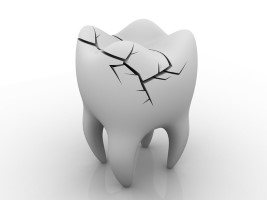 Many people may first think of the wisdom teeth when they hear the phrase tooth extraction, but there are a number of other reasons that a patient may need to have a tooth removed, as well. For example, a tooth that has been severely damaged by injury may not be salvageable.
Many people may first think of the wisdom teeth when they hear the phrase tooth extraction, but there are a number of other reasons that a patient may need to have a tooth removed, as well. For example, a tooth that has been severely damaged by injury may not be salvageable.
Similarly, extraction may be indicated in the case of a tooth that has been significantly compromised by extensive decay to the degree that not enough tooth material remains to support a restoration.
An oral surgeon may also need to extract a tooth as part of an orthodontic treatment plan. If the patient’s smile is “crowded,” removing a tooth can create the space needed to move the other teeth into their proper positions.
Indeed, impacted teeth also may be extracted, and the surgeon may need to remove surrounding bone first in order to access the teeth.
Regardless of the issue creating the need to have a tooth removed, your surgeon should work with you to make your tooth extraction as comfortable as possible. Ask about your options for sedation, such as nitrous oxide or IV sedation, and how you will be monitored while under the sedative’s effects.
The amount of time the patient will need to recover after the extraction will vary based on the type of extraction. For example, it takes longer to bounce back after you’ve had a wisdom tooth removed than it does with a simple extraction.
When faced with a tooth extraction, patients also should begin to ponder how they plan to replace that tooth to minimize the amount of time spent with a hole in the smile. Dental implants are one possibility for a structurally complete tooth replacement, so you may want to discuss that option with your surgeon.
Patients who need to have a tooth removed should carefully consider the practitioner based on expertise and experience. Call our office to learn more about our staff’s qualifications and our facility’s amenities for this type of procedure.






